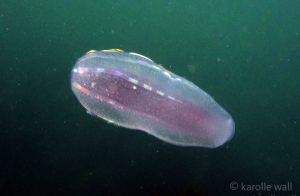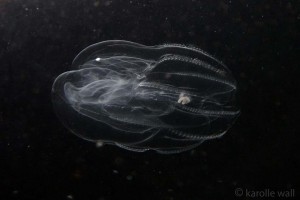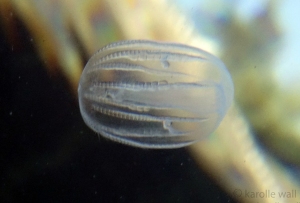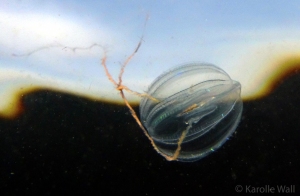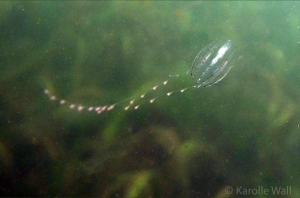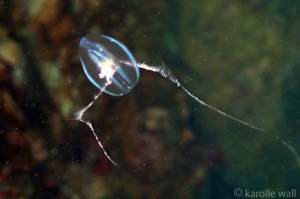Ctenophores, more commonly called comb jellies, do not belong to the same phylum as your typical pulsating jelly. Ctenophores propel themselves through the water by moving tiny comb-like structures called ctenes. All comb jellies in the Salish Sea/Pacific Northwest have eight rows of ctenes that light up in rainbow-like colours as they vibrate, but some of these rows run the entire length of the body and others only partially. All ctenophores have some kind of tentacles, usually very sticky, that aid in the capture of their prey; all have an oral opening, Currently, I have documented six comb jellies — three members of the cydippida family (usually referred to as sea gooseberry or sea walnut jellies), one from the Beroe family (cigar comb jellies). one from the family Bolinopsidae (lobed jellies) and a Dryodora glandiformis. Claudia E. Mills and Steven H.D. Haddock of Washington State University provide a more complete list of ctenophores as well as some excellent descriptions and illustrations in the linked publication.
